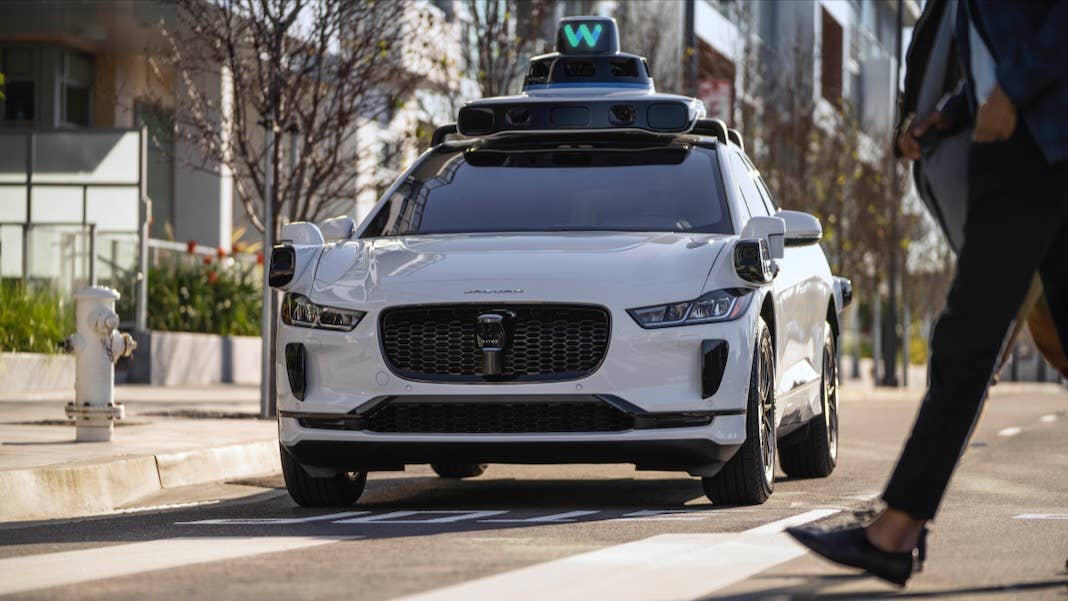Tens of Thousands of People Can Now Order a Waymo Robotaxi Anywhere in San Francisco

Share
On Monday, Waymo announced on X that it's expanding its city-wide, fully autonomous robotaxi service to thousands more riders in San Francisco.
The company had been testing a service area of nearly the whole city (around 47 square miles) with employees and, later, a group of test riders. But most people using the service were precluded from riding in the city's dense northeast corner, an area including Fisherman's Wharf, the Embarcadero, and Chinatown.
Now, the full San Francisco service area will be available to all current Waymo One users—amounting to tens of thousands of people, according to TechCrunch. While it's a significant increase, not just anyone can use Waymo in SF yet. The company has been growing the service by admitting new riders from a waitlist that numbered 100,000 in June.
"This territory expansion applies to those riders who currently have access to our service and all those to be added from the waitlist in the near future," Waymo spokesperson Christopher Bonelli told the Verge. "We are still seeing very strong demand, so we want to scale responsibly to maintain service quality and good user experience."
It's a milestone years in the making. Waymo traces its roots back to 2009, when it was the Google self-driving car project. The project first began testing the technology on public streets with safety drivers behind the wheel in Mountain View, California. Google spun the project out as Waymo, a standalone company under the Alphabet umbrella, in 2016 and began offering services with a public trial in Phoenix the next year. Testing began in San Francisco in 2021.
San Francisco has proven a more challenging environment than Phoenix, with aggressive urban drivers, steep hills, and at-times narrow, winding streets. Early on, commercial services were restricted to rides with a safety driver behind the wheel. Waymo and GM's Cruise received approval from California's Public Utilities Commission to charge riders for autonomous rides day and night without a safety driver this August.
The expansion has not been without controversy. Self-driving cars have blocked traffic and been involved in high-profile incidents, including a collision between a Cruise vehicle and a fire truck. Most recently, a pedestrian hit by another car—with a human at the wheel—was knocked in front of a Cruise vehicle. The car braked "aggressively" but could not avoid the pedestrian and came to a stop on her leg, pinning her to the street.
The California DMV asked Cruise to halve its San Francisco fleet last month while it investigated recent incidents. The City of San Francisco, meanwhile, has contested the decision to green-light expansion, and protesters have been disabling vehicles by placing construction cones on the cars' hoods to block sensors.
Be Part of the Future
Sign up to receive top stories about groundbreaking technologies and visionary thinkers from SingularityHub.


As the rollout widens, the companies will continue to face questions about readiness and safety. In early September, Waymo released a report coauthored with insurance giant Swiss Re claiming its cars are safer than human drivers. In his own analysis of crash data, published the week before, technology reporter Timothy B. Lee wrote there's uncertainty in the statistics and comparing self-driving cars to human drivers is difficult.
Still, he found that, after several million miles driven by both Cruise and Waymo, most documented collisions were low-speed and and often the fault of another driver. This was especially true for Waymo, which he found had a comparatively cleaner safety record.
"Human beings drive close to 100 million miles between fatal crashes, so it will take hundreds of millions of driverless miles for 100 percent certainty on this question," he wrote. "But the evidence for better-than-human performance is starting to pile up, especially for Waymo." Lee also suggested that even more transparency on performance is needed to confidently assess the overall safety record of self-driving cars.
As they navigate recent criticism, both projects have plans to further expand. Cruise has announced testing in 14 new cities and is aiming for revenue of $1 billion in 2025. In addition to San Francisco and Phoenix, Waymo is building out services in Los Angeles and Austin. The company will also begin testing electric self-driving vans made in partnership with Geely Zeekr—the vans lack steering wheel and side mirrors—later this year.
While continued caution is warranted, Cruise and Waymo are also likely feeling some pressure financially. The two projects have poured billions into development of their self-driving platforms and still operate at a loss. In the coming months and years, they'll have to prove they can be profitable—without compromising on safety.
Image Credit: Waymo
Jason is editorial director at SingularityHub. He researched and wrote about finance and economics before moving on to science and technology. He's curious about pretty much everything, but especially loves learning about and sharing big ideas and advances in artificial intelligence, computing, robotics, biotech, neuroscience, and space.
Related Articles

These Robots Are the Size of Single Cells and Cost Just a Penny Apiece

Hugging Face Says AI Models With Reasoning Use 30x More Energy on Average

Study: AI Chatbots Choose Friends Just Like Humans Do
What we’re reading
